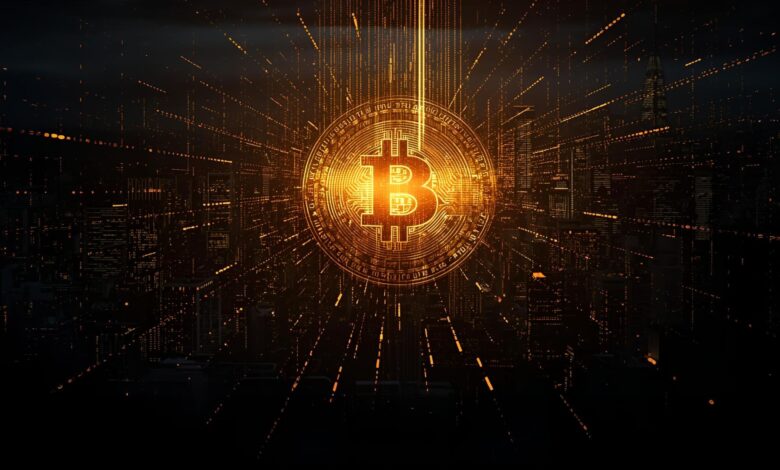
Bitcoin’s Truth Musk Says Energy-Based, Can’t Be Faked
When Elon Musk re-enters the fray of Bitcoin commentary, the cryptocurrency world listens. In a recent post on X (formerly Twitter), Musk made a provocative statement: Bitcoin’s Truth Musk Says. It is impossible to fake energy.” This declaration marks a striking shift from past criticisms of Bitcoin’s energy usage to a bold re-embrace of its fundamental architecture. But what exactly does Musk mean by “energy,” and is it truly impossible to fake energy in relation to Bitcoin’s value proposition.
In this article, we will examine Musk’s claim in detail, explore how Bitcoin is tied to energy via proof-of-work, consider critiques and counterarguments, and analyze the implications for Bitcoin’s future credibility. Along the way, we will weave in related phrases, and like proof-of-work, mining energy use, decentralized currency, fiat printing, blockchain security, and energy economics to enrich context. Our goal is to present a balanced, engaging, and SEO-optimized deep dive into the meaning behind Musk’s statement and what it means for Bitcoin’s narrative.=
Musk’s Statement in Context
A U-turn or Strategic Reframing
Elon Musk’s relationship with Bitcoin has long been tempestuous: from Tesla’s $1.5 billion investment and acceptance of Bitcoin as payment in early 2021, to a dramatic reversal citing environmental concerns, and then significant divestment. In his latest post, he responded to an X user who asserted, “you can’t print energy.” Musk concurred:“True. That is why Bitcoin is based on energy: you can issue fake fiat currency, and every government in history has done so, but it is impossible to fake energy.”
By framing Bitcoin as grounded in energy, Musk pivots away from the environmental debate and toward a philosophy: that digital value is tethered to an objective physical input. This new angle invites deeper scrutiny of what “energy-based” really means for a digital asset.
The timing is not incidental. As global strain on energy infrastructure and scrutiny of monetary expansion intensifies, Musk’s remark resonates with critics of fiat currency and proponents of sound money. It reframes Bitcoin as not just speculative token, but as a form of digital energy accounting.
What Does Bitcoin Based on Energy Actually Mean

The Role of Proof-of-Work
To parse Musk’s statement, one must understand the proof-of-work (PoW) mechanism that underpins Bitcoin. In a proof-of-work blockchain, miners compete to solve complex cryptographic puzzles using computational power. This competition consumes electricity—i.e., energy converted into work. The first miner to solve it earns the right to append a block and collect the block reward and transaction fees.
In this sense, each block of Bitcoin is validated by real physical work. The energy expended becomes part of the security model: to attack the network or fabricate history, someone would have to replicate or exceed that energy investment. The energy barrier is part of what makes fraud or double-spending prohibitively expensive.
Thus, by saying Bitcoin is based on energy, Musk references this very tie: Bitcoin’s issuance, security, and consensus derive from energy expenditure. This helps explain why proponents often call Bitcoin “digital gold” or “digital energy.
Why Energy Is Hard to Fake
Musk’s claim continues: it is impossible to fake energy. What does that imply? It suggests that while governments can create fiat units arbitrarily, they cannot counterfeit or conjure real, measurable energy without input costs. You can’t just invent megawatt-hours out of nothing; they come from generation, fuel, or alternative sources, all of which require capital, maintenance, and physical infrastructure.
In Bitcoin’s context, to fake a valid block, an attacker would need to supply as much energy as the original mining process—or more. That is precisely what the network assumes is infeasible. As a result, the energy link becomes a defense against falsehood: you can’t replicate that energy input without incurring real, observable cost. Therefore, Musk frames Bitcoin’s energy foundation as a bulwark of authenticity. It implies that Bitcoin’s value is not arbitrary but anchored in verifiable physical work.
Comparing Bitcoin’s Energy to Fiat Currency
The Problem of Fake Fiat Money
Throughout history, governments have engaged in monetary expansion—printing more currency to address deficits, stimulate economies, or respond to crises. Critics argue that this leads to inflation, devaluation, and currency debasement. Musk invokes this critique: fiat money can be faked in the sense that more units can be created without equivalent real economic backing.
By contrast, Bitcoin has a capped supply (21 million tokens) and cannot be printed beyond that. The new supply emerges only through the energy-dependent mining process. Musk’s verbal pairing—“fake fiat vs. real energy”—positions Bitcoin as resistant to arbitrary creation. He contends that many governments have abused their capacity to issue currency, but no one can fake energy in the same manner.
Energy as Scarcity and Verifiable Input
Bitcoin’s architecture merges scarcity (fixed supply) with verifiable cost (mining energy). This contrasts with systems where scarcity is symbolic and cost is abstract. Because miners must expend energy—and that energy is measurable. kWh consumed, electricity bills, grid draws)—The blockchain effectively records a cost input. In practice, energy becomes a gatekeeper: one must pay for it, procure it, and deploy it. This ties the abstract world of digital tokens to the tangible realm of physics and infrastructure.
Critiques and Counterarguments
Environmental and Efficiency Concerns
Even if one accepts Bitcoin’s energy base as its strength, critics argue that proof-of-work is wasteful. The substantial electricity consumption of the Bitcoin network has been cited as a liability, particularly when much of that energy comes from fossil fuels.¹ Musk himself previously criticized Bitcoin on that ground.
Furthermore, detractors ask: is all that energy spent useful? Because mining is contest-based, vast computational resources go toward solving puzzles whose only function is validation, not performing real-world tasks like research or modeling. Critics consider this energy “burned” for validation, not utility.
Theoretical Attacks and Centralization
Another critique is that energy can be concentrated or leveraged by powerful actors. Suppose a state or entity were to acquire a massive energy generation capability or collude with energy producers to drive down costs. That might allow them to dominate mining operations and control block production. In that way, “faking” energy in the sense of controlling it becomes a risk.
Moreover, mining centralization—where a few mining pools dominate hash power—can reduce the decentralization benefit of spread-out verification. If most mining is clustered, then security assumptions weaken.
The Essence of Faking Energy Is More Nuanced
When Musk says “impossible to fake energy,” one could argue that while you can’t fake raw thermodynamics, you could misrepresent identity, collude across data centers, or distort electricity accounting.
For instance, fraudulent bookkeeping or misreported fuel sources could obscure the true cost of generation. Sophisticated actors might mask their mining operations as innocuous utility loads. In that sense, energy inputs are susceptible to obfuscation, even if not pure fabrication.
Also Read: Bitcoin News Trump 2025 Crypto & Policy Shake-Ups
Implications for Bitcoin’s Narrative & Market

Reinforcing Trust and Legitimacy
If Musk’s claim resonates, it could bolster the story that Bitcoin isn’t speculative fairy dust but a ledger of work. The narrative shifts from “digital money” to “energy-backed currency.” That helps defend Bitcoin against critics who say it has no real intrinsic value.
By insinuating that Bitcoin is grounded in physical energy, it becomes harder to dismiss as intangible. For investors and institutions seeking assets detached from fiat’s inflation risks, that philosophical anchor can be appealing.
Influence on Regulation & Carbon Accounting
Musk’s reframing may shape how regulators approach Bitcoin. If energy becomes central to its legitimacy, governments might impose stricter transparency on miners’ power sources, mandate green energy thresholds, or enforce environmental audits.
Mining operations could be required to certify that electricity consumption is verifiable and sustainable. In turn, miners with access to low-cost, renewable energy would be favored; those relying on fossil-fuel grids might suffer regulatory or reputational penalties.
Price Sentiment and Market Reaction
Musk’s posts have historically influenced cryptocurrency markets. His endorsement of Bitcoin—especially via a philosophical justification—may spark renewed demand or institutional interest. Some analysts have already interpreted his comments as bullish.
However, markets are volatile and reactive to broader macro trends (interest rates, regulations, adoption) as much as to social impact. Still, positioning Bitcoin as energy-rooted could attract long-term capital from sectors interested in real-asset backing, energy infrastructure, and sustainability.
How This Fits Within Broader Crypto Discourse
Other Cryptos and Consensus Alternatives
Bitcoin is far from the only blockchain. Many newer systems adopt proof-of-stake (PoS) or other consensus mechanisms that use dramatically less energy. The tradeoff is that PoS substitutes stake-based validation for direct energy expenditure. Critics of Musk’s energy framing might point to these alternative approaches as demonstrating that consensus can be achieved without massive energy input.
However, the counter is that PoS is more abstract: value is backed by token holdings rather than physical cost. That opens criticisms about concentration of stake and the abstractness of validation. Musk’s energy narrative appeals to those who see tangible cost as a more defensible foundation.
The Energy Money Meme
Musk’s comments amplify a meme already gaining traction in crypto circles: Bitcoin as “energy money.” Under this paradigm, each bitcoin represents a quantified share of past energy investment, similar to how gold represents work in mining.
Some thinkers propose that Bitcoin is better thought of as an energy accounting system, not just a digital currency. This overlaps with ideas such as entropy money, computational energy token, and proof-of-work as a truth machine. Musk’s re-entry helps bring such concepts into the mainstream conversation beyond technologists.
Navigating the Nuances & Caveats
Avoiding Over-Optimization of the Narrative
While Musk’s energy framing is powerful, it should not be taken as a panacea. Bitcoin remains subject to volatility, attack vectors, adoption challenges, and energy politics. It is not immune to critique simply because it uses energy. Over-optimizing the idea (i.e., claiming Bitcoin is perfect because it “can’t be faked”) risks ideological overreach. It is better to view Musk’s statement as a lens—one perspective in a larger discourse about value, trust, and energy economics—rather than as a complete gospel.
Bal anced Energy Tradeoffs
One must balance the energy cost with the benefit. While Bitcoin’s energy tie secures immutability, one must ask: Does the benefit justify the consumption? If the network scales further, will energy demand become too burdensome relative to the utility? These are open questions.
Also, mining energy mix is crucial: if miners rely on nonrenewable resources, the environmental cost becomes more than theoretical—it may be politically and socially unsustainable. Thus, the energy foundation is only as strong as its sustainability.
Conclusion
Elon Musk’s bold claim—“Bitcoin is based on energy, which is impossible to fake”—is more than a provocative tweet. It reframes Bitcoin’s value proposition: not as an abstract token but as a ledger of expended work. By anchoring digital currency to real energy inputs, Musk challenges detractors who view Bitcoin as untethered speculation.
However, the claim is neither unassailable nor entirely novel. It opens intricate debates about proof-of-work, consensus, mining centralization, energy sources, and alternative blockchain models. Its power lies not in certitude, but in reframing the conversation: Bitcoin as energy-enforced trust.
Whether this perspective will reshape regulation, market adoption, or narrative dominance remains to be seen. Yet one thing is certain: the idea of Bitcoin as digital energy is now firmly back in the spotlight.
FAQs
What does Elon Musk mean by impossible to fake energy in relation to Bitcoin?
He means that, unlike fiat money which governments can print or debase at will, energy must be physically generated and consumed. In Bitcoin’s proof-of-work system, miners expend real energy to validate blocks. To mimic or fake that, an attacker would need to replicate that energy cost, making fraudulent blocks economically unviable.
Isn’t Bitcoin’s energy usage a weakness, not a strength?
Many critics argue so, citing environmental impacts and inefficient use of electricity. The counterargument is that the energy is not waste, but security: it underpins trust. The strength argument is contingent on sustainability, efficiency, and mining energy sources.
Can other blockchains fake energy using proof-of-stake?
No. Proof-of-stake systems don’t use energy in the same way; they rely on token-holders staking their assets to validate blocks rather than computational work. In that sense, they abstract away explicit energy input, which some argue weakens their anchoring in physical cost.
Does Musk’s statement make Bitcoin invulnerable to attacks or manipulation?
No. While the energy barrier raises the cost of attack, vulnerabilities remain: mining centralization, collusion, hardware monopolies, regulatory risk, and obfuscation of energy sources are possible attack vectors. His statement is a philosophical lens—not a security guarantee.
How might this energy-based Bitcoin narrative affect adoption and regulation?
It could push regulators to demand transparency in miners’ power sources, encourage renewable energy adoption, and raise standards for energy audits. For adoption, institutions may find the energy-anchored narrative more palatable than previously if they perceive it as a more defensible foundation than mere token speculation.







